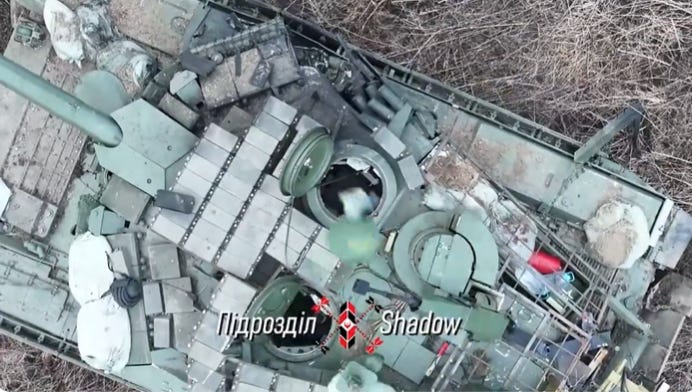Analysis of two new interesting findings from both the U.S. and Ukraine military sphere.
There has been another series of very revealing transmissions from the Ukrainian side that will undoubtedly fly under the radar. They shed light on certain key thematic aspects of the war, particularly in this case the NATO relationship to the AFU and its doctrinal military philosophy, which gives us a much more informed understanding of how and why the conflict is playing out the way that it is.
The first item is the latest video from popular YouTube channel Red Effect, which many of you are familiar with, that focuses mostly on tank videos throughout the conflict, with a pro-Ukrainian slant:
Initially I was ready to dismiss the video offhand, but ended up being increasingly intrigued by what was being said. It’s called “Are Ukrainians using the Abrams tank wrong?” and consists of an interview with an actual active duty U.S. Army Abrams tank commander.
He doesn’t reveal his real name, but he does sound knowledgeable, knows the lingo, and his rank of staff sergeant does accord with what the lowest level of tank commander below platoon leader would be. He states he has 10 years experience, 4 deployments, and has served multiple years in each position of the Abrams tank, i.e. gunner, loader, driver, and commander, and so knows the system in and out.
He starts off with fairly generalized and uninteresting answers. However, reading between the lines he lets out quite a few tacit reveals.
The first one of these is around the 4 minute mark, where he states his own unit, which is currently undergoing further training, has only just now begun to ‘interject drones’ into the equation. The most eye-opening part is the types of drones they’re using are ones which drop grenades from above onto the tank. Anyone who’s followed the Ukraine war would blink hard at such an amateur oversight by the seemingly clueless U.S. Army.
It’s widely understood that grenade-dropping drones are not even remotely the issue in current armored combat. Even the stock footage they play over this segment of the interview emphasizes the point: these types of drones are typically used to ‘finish off’ tanks which have already long been disabled. That means they are not active combat drones, but rather the clean up that scours a post-battle field of desolation, opportunistically hunting vehicles or wounded to finish off. What possible use would tank commanders have in wasting their time training against that?
FPVs that fly at high speeds with cumulative charges are the problem, not slow grenade-heaving drones. His next words are in many ways even more jarring because his manner of even discussing drones feels so ‘green’ and, quite frankly, out of touch.
He relays that his command will “supposedly” interject “more of this kind of training”—admitting he’s not even certain if they’ll go beyond just the superficial and totally pointless affectation of dropping a few grenades from above. He then further admits that “the whole concept of drones is absolutely crazy [to us]”, in essence revealing the U.S. Army lags behind drone developments such that they are still in effect just poking at it with a stick, unable to even come to terms with basics in the way that’s become second nature for both the Ukrainian and Russian side two years running.
This is supported by his further comments, as everytime he speaks on the drone threat, it feels increasingly like the U.S. Army is really out of touch and is treating drones as a sort of novelty to vaguely acquaint tankers with, as if still counting on the intangible magic of the mythical U.S. “Might” to take care of the threat.
This is actually a typical U.S. military behavior, alluded to by many in the past, like Dr. Phillip Karber in his speech at West Point. Each U.S. military branch quietly expects to pass the buck to ‘some other’ branch which they feel confident will ‘take care of the problem’. For instance, tankers might feel: “I’m not worried, I’m sure our EW units will take care of those pesky drones for us if we ever have to deploy”, thinking just a basic familiarity with the problem should be enough to mitigate any potential harm.
But little do they know, there will be no other unit or branch to miraculously save them. The U.S. frontline EW capabilities are not even a fraction as developed as those of Russia—and you can see Russia itself struggling against this persistent drone threat. The fact that the sergeant in the video continues referring to FPVs as dropping ‘grenades’ seems to imply he does not even truly comprehend the specific threat FPVs pose, which has nothing whatsoever to do with grenades or dropping anything. It’s akin to a ‘boomer’ discussing Gen Z fads—you can just sense they’re not quite picking up on the real essence of things.
It also makes me wonder whether the commander is misapprehending the videos he’s watching out of Ukraine. This would be telling, and redound onto the U.S. Army itself. He may be viewing grenade drops into open hatches, interpreting the targets to be live still in combat, which is almost never the case.
